Text and Images by Zainab
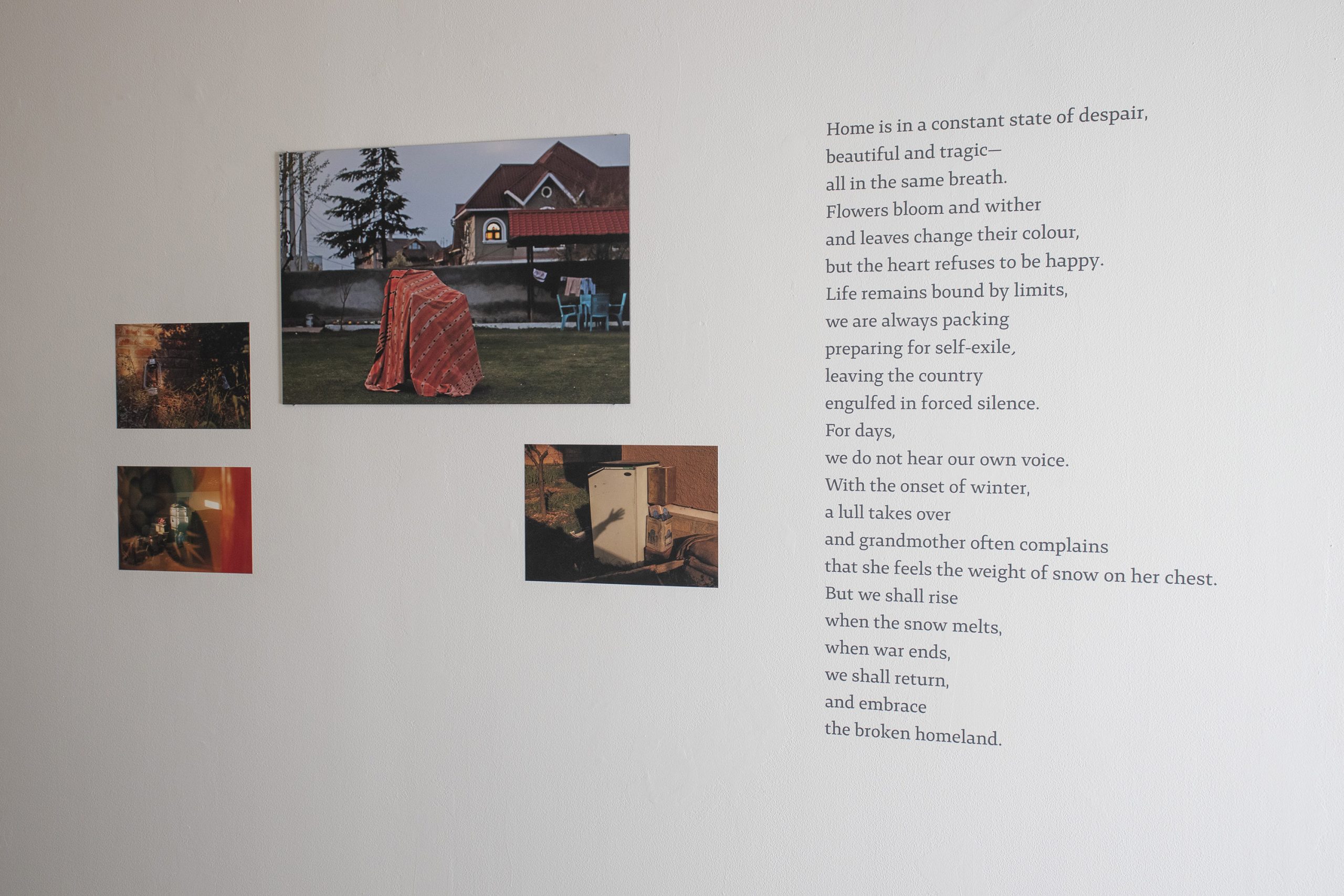
I.
My grandmother looked out of the window, tired of the slowness of the winter of 2021. On seeing everything blanketed in white, she said: ‘mye chu yem shinne baaguk baar dilas peth (I feel the weight of snow on my chest).’ The phrase has stayed with me, and later that year I used it as a title for the first exhibition of my work The Weight of Snow on Her Chest (2018-ongoing).
This series is a rendering of the many meanings of ‘home’ in Kashmir, where today a massive occupying military/paramilitary force suffocates our identity and very existence.
In 2020, as the coronavirus pandemic spread through the world, the Kashmir Valley was just beginning to recover from what many press reviews across the board have called a military “siege” of 2019, imposed to crush any popular movement resisting the Indian government’s unilateral abrogation of Articles 370 and 35A of the Indian constitution through parliament.[1,2] This revoked Kashmir’s semi-autonomy/special status and the related rights, protections and privileges of Kashmiri citizens, who are now facing the threat of losing their lands and livelihoods to resource-rich outsiders.[3]
The violent crushing of dissent and traumatic “siege”-like situations in Kashmir set in place a carceral ethos that includes soldiers patrolling the streets, bunkers, barbed wire barricades, surveillance, security checks, curfews, lockdowns, internet and telecommunications shutdowns, and local populations gripped by a generalized anxiety rooted in/reinforced by the harrowing disruption of daily life.[4]
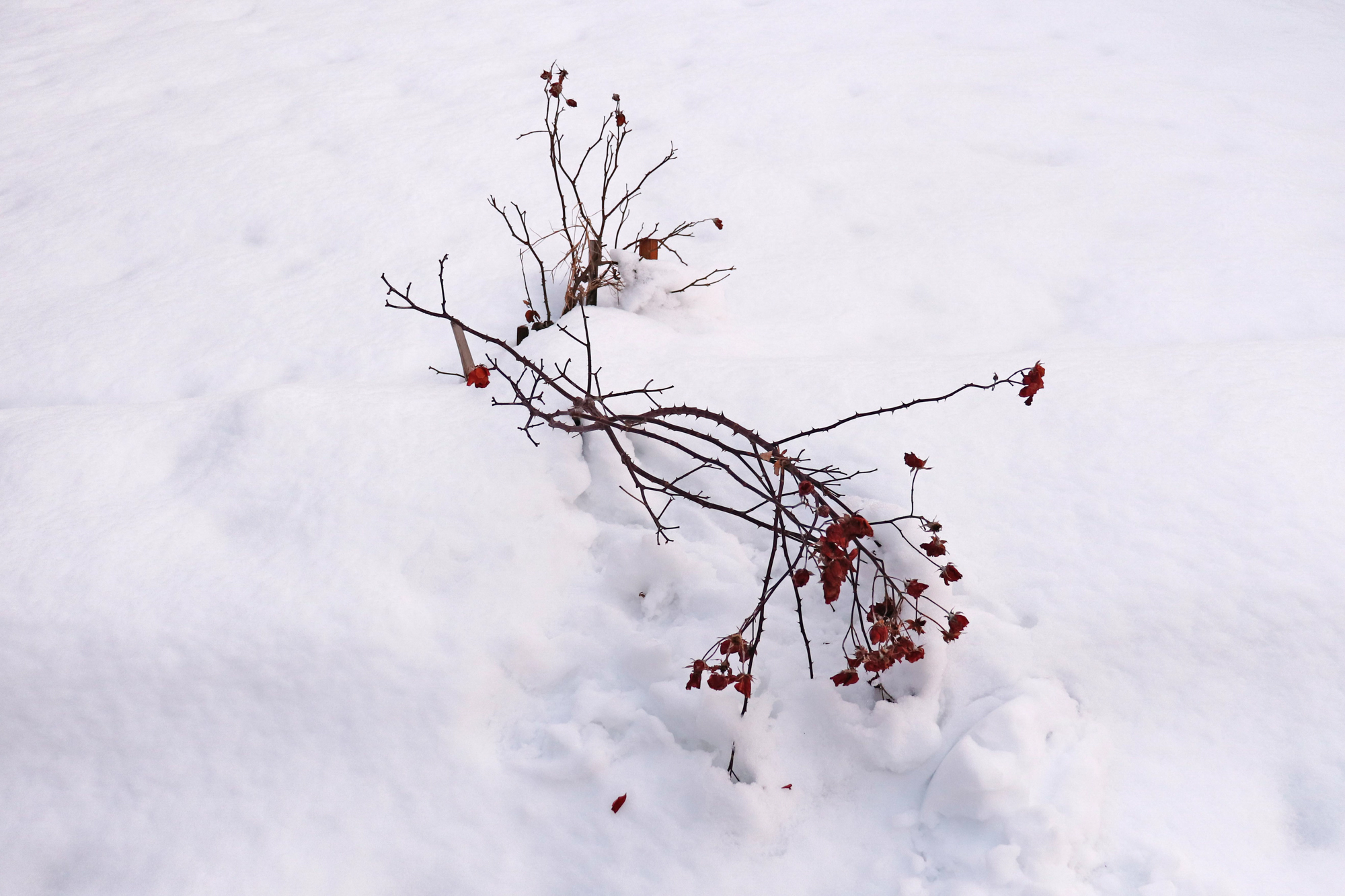
I have been photographing my home from a very young age. I grew up in the decades marked by frequent civil uprisings when the Valley was locked down for months and literally kept incommunicado from India and the rest of the world. In 2019 I returned to my earlier habit of making images on the theme of ‘home’. These photographs now take the form of personal albums, small virtual exhibitions on hard disks, and as a developing archive on Instagram.
My images, verses and captions juxtapose Kashmir’s lived realities of exile, faith, violence, hope and resilience.
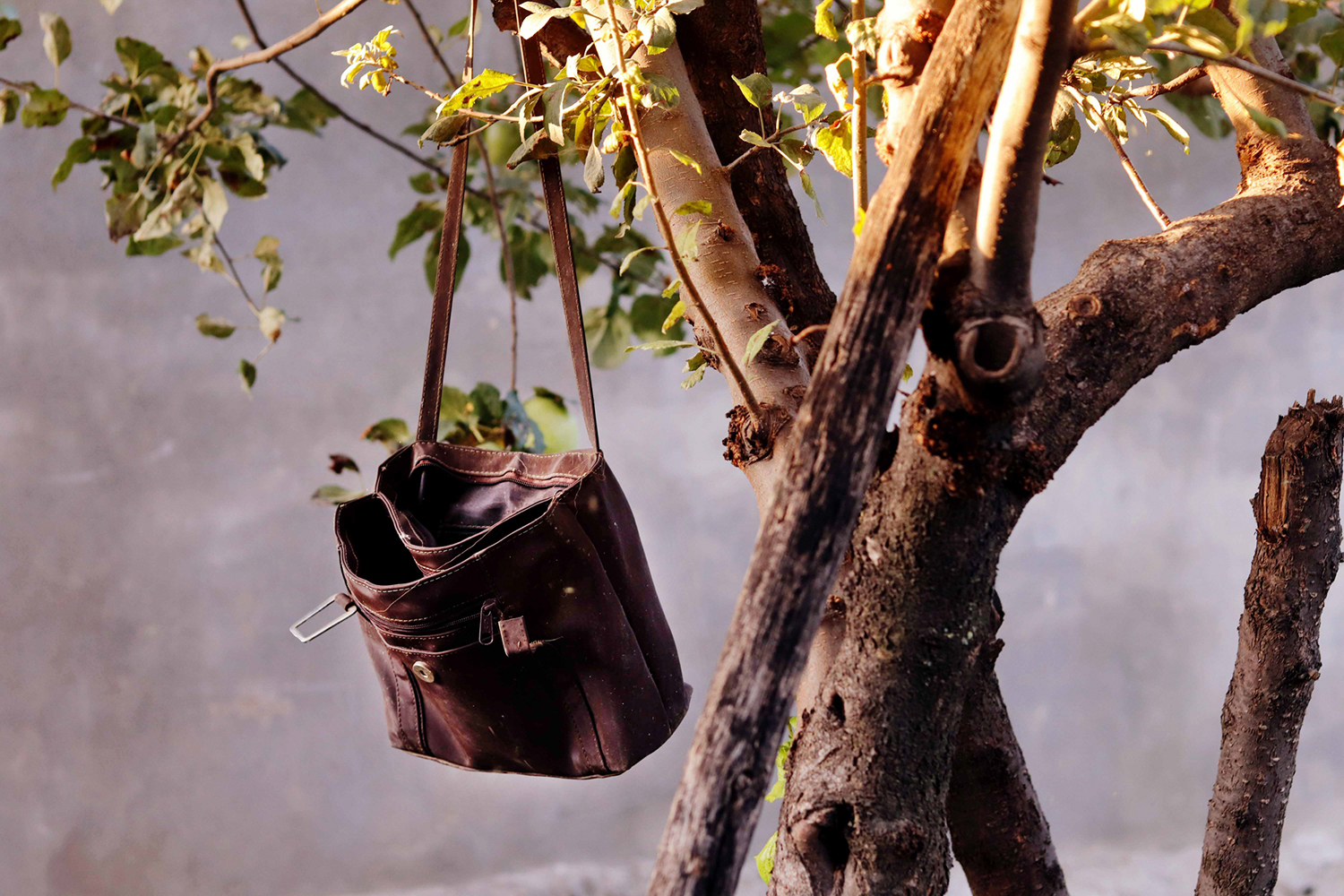
They bear witness to the ongoing outcomes of over seven decades of the Indian state’s subjugation and coercion of Kashmir.
The garden and the home have become a stage, and my family the protagonist in our homeland’s central story.
Images also become markers of how martyrdom is commemorated in Kashmir. The sacrifice of sheep on Eid, and of young rebels in the struggle for freedom, are both celebrated.
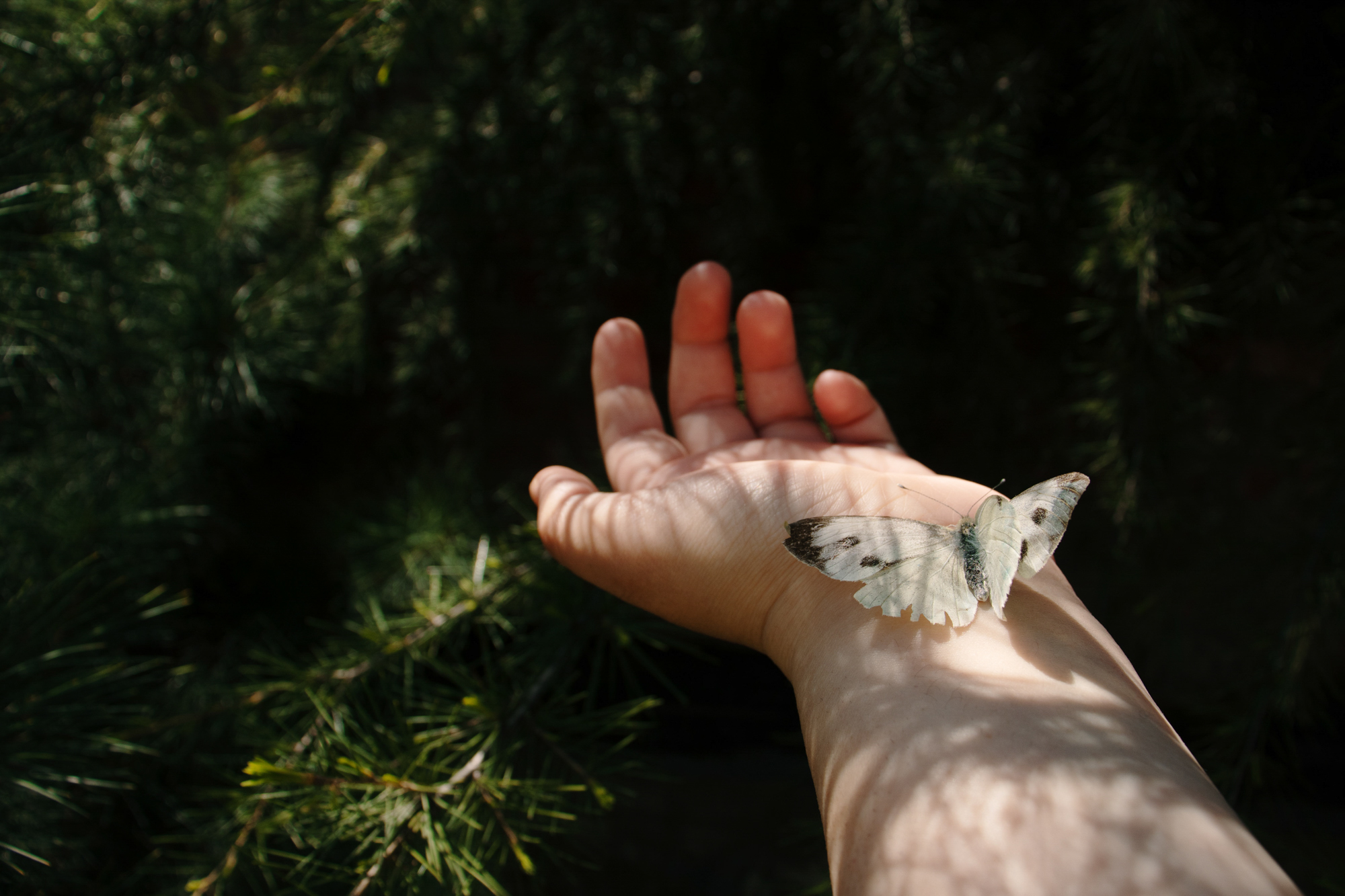
II.
In late 2020 I started my practice as a photojournalist, and often focused on the theme of ‘home’. My work included documenting sites of military operations and their aftermath of material destruction. I often encountered things common to Kashmiri households – for instance, a pomegranate tree in a courtyard, a rack of spices, or stored rice grains – most often burnt, their charred smells lingering in the blasted home.
My verses accompanying some of these images allude to my photojournalism practice.
A Portrait of a Home in Kashmir
In the valley of shattered houses,
there is
a home in Kashmir.
Its windows wait to embrace the bullets,
it has memories clinging to walls
that can be blasted anytime.
A pomegranate tree timidly blooms in its garden,
it might be uprooted before it fruits.
It is the story of homes in Kashmir:
in Cholyan
in Tulran
in Danimar
in Maloora
in Feirpur
in Gundipur
in Nowgam
were homes,
with kitchens destroyed,
overnight reduced to rubble.[5]
The patterns of melted curtains
are mapped in our memories,
as we count days
and wonder, how long
till all homes are ash?
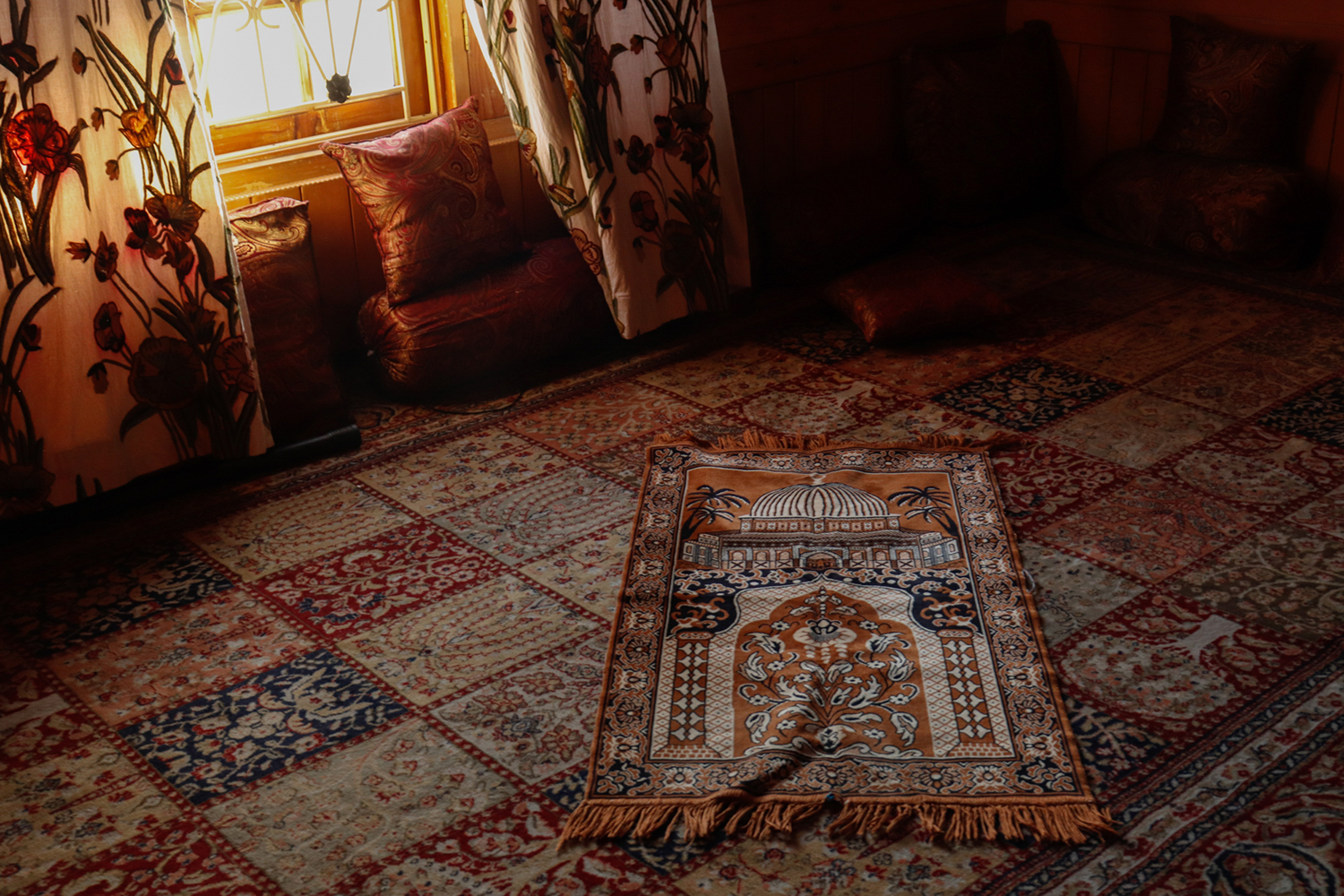
Through the album one sees the seasons changing, the rain moistening the earth and fulfilling the promise of return:
Home is in a constant state of despair,
beautiful and tragic –
all in the same breath.
Flowers bloom and wither
and leaves change their colour,
but the heart refuses to be happy.
Life remains bound by limits,
we are always packing
preparing for self-exile,
leaving the country
engulfed in forced silence.
For days,
we do not hear our own voice.
With the onset of winter,
a lull takes over
and grandmother often complains
that she feels the weight of snow on her chest.
But we shall rise
when the snow melts,
when war ends,
we shall return,
and embrace
the broken homeland.

Kashmir is often, and typically, advertised as an idyllic destination through photographs of its exquisite natural beauty, its mountains, lakes and meadows. To me these fetishistic projections are a profound illusion masking the ground realities of an embattled, besieged homeland.

The only way I can fully express the ‘weight’ of ‘snow’ in my works is through my accompanying verses that serve not only to complement but also to complete my images, to render the whole picture.

The verses speak what cannot be shown, the images show what cannot be spoken.
Notes
- Anando Bhaktoin, “Kashmir under siege”, Frontline, 14 August 2019; https://frontline.thehindu.com/cover-story/kashmir-under-siege/article29047653.ece
- “One killed, 70 injured as protestors help rebels escape Kashmir siege”, The Indian Express, 29 May 2019; https://www.newindianexpress.com/nation/2019/may/29/one-killed-70-injured-as-protestors-help-rebels-escape-kashmir-siege-1983396.html
- Geeta Pandey, “Article 370: What happened with Kashmir and why it matters”, BBC News, 6 August 2019; https://www.bbc.com/news/world-asia-india-49234708
- Kashmir has endured extended military-imposed sieges in the past three decades. In 2008, 2010, 2016 and 2019 several civil uprisings were crushed by long impositions of curfew and other restrictions by the occupying military and paramilitary forces.
- Cholyan, Tulran, Danimar, Maloora, Feripur, Gundipur and Nowgam are military operation sites I documented as a photojournalist.
 Zainab is a Kashmir-based visual artist. She studied journalism and mass communication in Srinagar, and is a founding member of Her Pixel Story, a collective of women photographers focusing on Kashmir. Her photographs have been exhibited at the Ishara Art Foundation (Dubai), 10th Breda Photo Festival (Breda, Netherlands), Gulf Photo Plus (UAE) and other international venues. She is currently a participant in the International Photography Programme 2023-2024 hosted by Pathshala South Asian Media Institute, Dhaka.
Zainab is a Kashmir-based visual artist. She studied journalism and mass communication in Srinagar, and is a founding member of Her Pixel Story, a collective of women photographers focusing on Kashmir. Her photographs have been exhibited at the Ishara Art Foundation (Dubai), 10th Breda Photo Festival (Breda, Netherlands), Gulf Photo Plus (UAE) and other international venues. She is currently a participant in the International Photography Programme 2023-2024 hosted by Pathshala South Asian Media Institute, Dhaka.